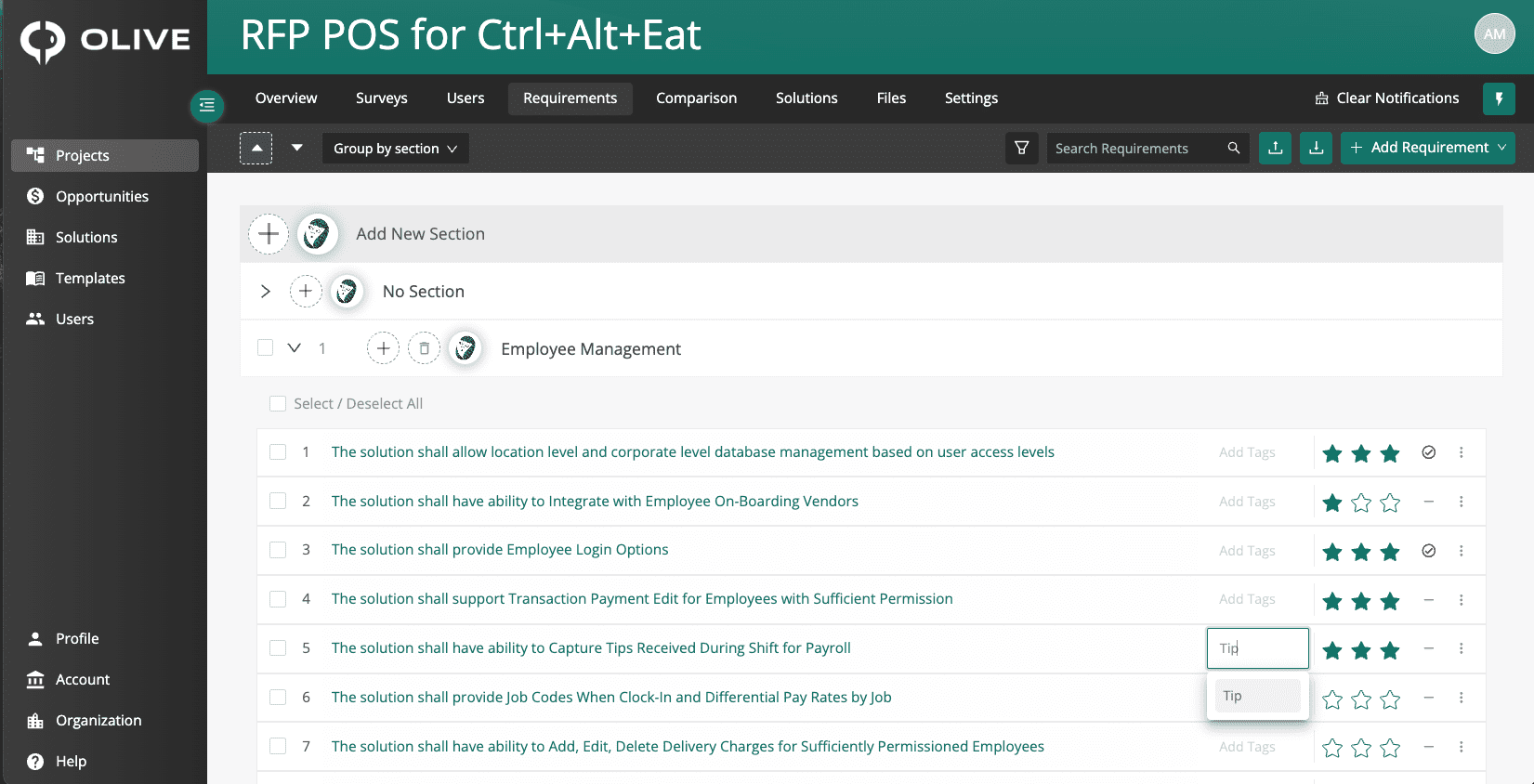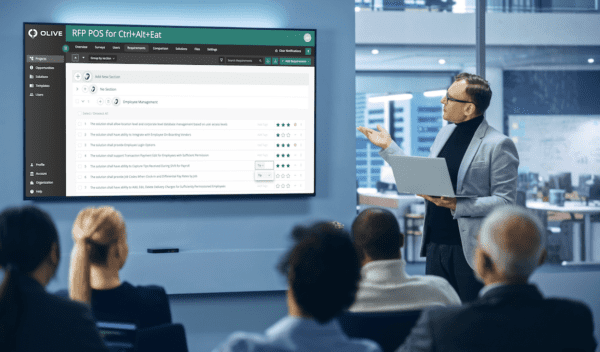In the world of procurement, issuing Request for Proposals (RFPs) is a critical process that demands precision and strategy. To navigate this terrain successfully, organizations need a clear roadmap and the right tools at their disposal. This guide serves as your compass, providing a step-by-step journey through the process of issuing RFPs and finding the best RFP software to streamline your efforts.
How to Issue RFPs: A Step-by-Step Guide
Step 1: Define Your Needs
Before embarking on your quest for the perfect RFP Software, it’s crucial to first define your organization’s needs and objectives. After all, the right software is the key to unlocking efficiency, transparency, and success in the procurement arena.
Step 2: Develop RFP Documents
Armed with a clear understanding of your requirements, it’s time to craft the RFP documents that will serve as your beacon in the storm of vendor proposals. With the right RFP Software, creating and customizing these documents becomes a breeze, allowing you to focus on what truly matters—finding the best-fit solution for your enterprise.
Step 3: Select Potential Vendors
With your RFP documents in hand, it’s now time to cast a wide net and identify potential vendors who can meet your organization’s needs. Harness the power of RFP Software to streamline vendor selection, automate communications, and ultimately, find the perfect partner to take your procurement process to new heights.
Step 4: Distribute the RFP
Once you’ve assembled your dream team of potential vendors, it’s time to unleash your RFP into the wild. With RFP Software by your side, distributing documents, tracking responses, and managing communications becomes a seamless and stress-free experience.
Step 5: Manage Vendor Communications
Effective communication is the lifeblood of any successful procurement process. With RFP Software, you can foster collaboration, address inquiries, and keep all stakeholders informed every step of the way. It’s the secret sauce that transforms good procurement into great procurement.
Step 6: Evaluate Proposals
As the proposals start rolling in, it’s time to roll up your sleeves and dive into the nitty-gritty of vendor evaluation. Leverage the robust features of RFP Software to compare proposals, analyze data, and ultimately, make informed decisions that will drive your enterprise forward.
Step 7: Select the Winning Vendor
With careful deliberation and the help of cutting-edge RFP Software, it’s time to crown the winning vendor—the one who will become your trusted partner on the journey to procurement excellence. It’s a momentous occasion that marks the culmination of your hard work and dedication.
Step 8: Notify Unsuccessful Vendors
While there can only be one victor, it’s important to extend gratitude and feedback to all who participated in the RFP process.
RFP Software for Issuing RFPs
Sourcing the right Request for Proposal (RFP) software solution for the implementation of new technologies in your enterprise, is essential. It can add significant value to your business while reducing the risk of selecting an unsuitable technology solution. With so many RFP vendors on the market, finding the right one can be a daunting task.
What is RFP Software?
A Request for Proposal (RFP) software is a computer program that enables you to manage your proposals. If you’re a service provider or a vendor, you can use RFP software to respond to RFPs and track proposals.
Conversely, as a buyer, RFP software enables you to issue RFPs. RFP software also streamlines the RFP process through automation, collaboration, and management systems.
What are the Benefits of Sourcing Best-Fit RFx (RFI, RFP, RFQ) Software for Issuing RFPs?
Implementing RFP (Request for Proposal) software can bring several benefits to an organization, including:
Time Saved Sourcing Enterprise Technology
RFP software can automate and streamline the entire RFP process, saving significant time for all stakeholders involved in the process, including procurement, legal, finance, and vendor management teams.
Improved Collaboration
One source of truth: RFP software enables collaboration among various stakeholders involved in the RFP process, facilitating better communication and alignment among teams, especially between IT, Finance, and Procurement.
Increased Efficiency
RFP software can automate several manual tasks, including requirements gathering, vendor evaluation, and proposal management leading to increased efficiency in the RFP process.
Better Vendor Management
RFP software can help organizations manage vendors better, allowing them to select the most suitable vendor for a project and manage contracts more effectively.
Overall, implementing RFP software can help organizations improve their procurement processes, save time and resources, and make better-informed decisions while mitigating risks.
Essential RFP Software Features for Technology Buyers
RFP Project Templates
RFP Project templates are a critical RFP software management feature, because they allow you to save countless hours that would otherwise be spent cobbling project requirements together. Project templates should come pre-loaded with features such as discovery surveys, standard requirements, vendor responses to requirements and possible vendor solutions.
Example of POS RFP Template in Olive
Requirements Templates
Using data driven requirements templates saves you the time of gathering and managing requirements manually or via spreadsheets.
Requirements Libraries
Aim to kick off your requirements gathering process as seamlessly as possible with pre-built requirements templates. These can be created in spreadsheets or using a platform like Olive. Reusing This will help you shave months off the evaluation process.
Requirements Gathering Automation
To automate and improve the requirements gathering process, look for features that deploy surveys at any stage of the process to capture, prioritize, manage and rank requirements. Effective requirements gathering features like surveys get everyone’s voices heard.
RFP Collaboration
Increased engaged collaboration amongst key decision makers bring much value to the RFP Process. Look out for RFP solutions that allows you to easily collaborate with key stakeholders both internally and externally.
Comparative Analysis
Look for features that help aggregate data and compare Solution Vendors to the company’s business requirements, not reviews from other organizations.
Ensure the RFP software does not charge vendors to respond, and facilitates vendor-neutral decisions based on exactly what you need, not what vendors are selling or subjective reviews.
AI Assistance
Competitors in every market are adapting to the world and the benefits of AI. Just as with the effective use of human resources, it pushes slow-moving companies toward obsolescence. Adopting AI is becoming a “when” more than an “if”. Olive has
How to Choose the Right RFP Software Vendor
Step 1: Focus on a needs-based approach
Because needs vary from company to company and change from day to day, there’s no such thing as the perfect RFP software. Instead of making your choice solely based on RFP features, you need to ensure the RFP software meets all requirements. Take the time to find the right solution with a thorough software selection process.
Step 2: Schedule a demo
Once you have established your organization’s needs, it’s time to take the next steps. Schedule a demo to see the solution in action and meet the team you’re considering working with. Bring your priority features list, along with questions that need to be addressed. Pay special attention to the user experience as the solution should be quick and easy for all RFP stakeholders to learn and use.
Step 3: Test out the solution
Now that you have established your needs and talked to your RFP solution provider, it’s time to test out the software. You should be able to seamlessly utilize vendor collaboration, requirements management, project templates and vendor comparison matrix reports all in the one platform.
Agile RFP Process Leads to Accelerated Digital Transformation for Dewey’s Pizza
Looking for Software to Help you Issue RFPs?
Still unsure of the best RFP software? We’ve got you covered! Olive is an AI powered Cloud Based RFP Software Solution with exceptional features that facilitate internal and external collaboration, requirements management, project templates and vendor comparison matrix reports.
Olive is more agile, digital, and collaborative than traditional RFP tools. It allows multiple department heads and vendors to work together seamlessly, speeding up the decision-making process. With Olive, you’ll be able to make informed, data-driven enterprise technology decisions faster than ever before.
Olive, the Ultimate Solution for RFP Automation
- Find Best-fit Solutions in 3x Faster with pre-created software evaluation project templates. Project templates are pre-loaded with discovery surveys, standard requirements, vendor responses to requirements and possible vendor solutions. New templates are added every month!
- Build out your requirements templates based on your expertise, or use our requirement libraries to help you build a template. Easily manage requirements and criteria by assigning them to sections such as functional requirements, non-functional requirements, and evaluation criteria.
- Gather and rank requirements in collaboration with key stakeholders; deploy surveys at any stage of the process to capture, prioritize, manage and rank requirements. Olive’s requirements management software gets everyone’s voices on the table, regardless of their location or how they prefer to work.
- Identify, gather, rank, and manage requirements; Use our AI-powered requirements templates, or build your own to reuse in the future. Olive’s surveys help you facilitate a seamless requirements-gathering process, helping you capture and record requirements and feedback from key stakeholders across the organization.







